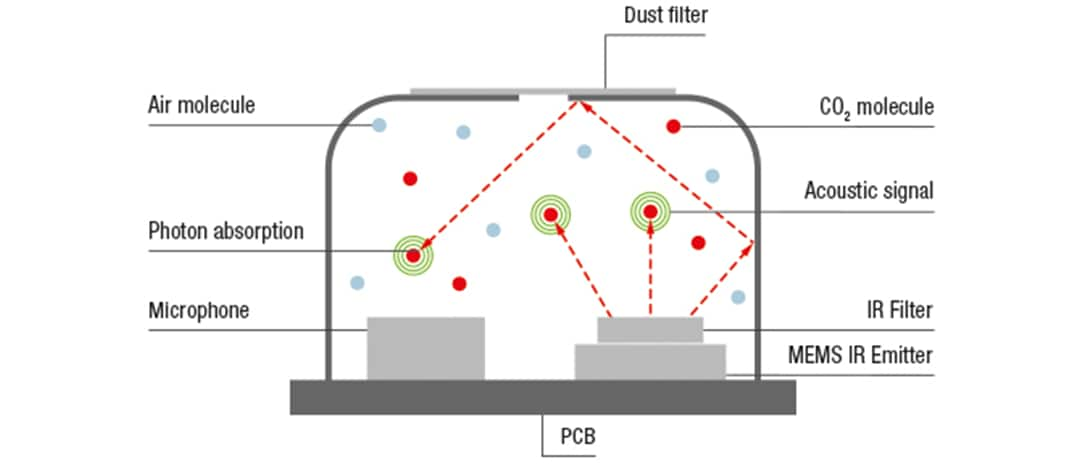- support@husseinkey.com
- livechat
Sensirion SEK-SCD41 Evaluation Kit enables easy plug-and-play evaluation of the miniaturized SCD4x CO2 sensors and facilitates prototyping of indoor air quality monitors that can help to maintain a low CO2 concentration for healthier indoor environments. Electrical interfacing can be realized either via the through-hole pads or alternatively via the included jumper cable that connects to the integrated JST connector. The compact design measuring 28mm x 24mm x 8mm, the large supply voltage range (2.4V to 5.5V), and the mounting holes allow versatile prototyping.
The SCD4x Miniature CO2 sensors build on the photoacoustic sensing principle and Sensirion’s patented PASens® and CMOSens® technology to offer high accuracy at an unmatched price in a small form factor. SMD assembly allows cost- and space-effective integration of the sensor combined with maximal freedom of design.

PASens Technology is based on the photoacoustic sensing principle. The photoacoustic sensing principle allows extreme miniaturization of the CO2 sensor without compromising sensor performance.
Narrow-band light matching the absorption bands of CO2 molecules is emitted into a predominantly closed measuring cell. CO2 molecules in the measuring cell absorb a part of the irradiated light, whereas other molecules cannot contribute to absorption due to the spectrum of the emitted light. The more molecules present in the measuring cell, the larger the absorbed energy. The absorbed energy of the CO2 molecules excites mainly molecular vibrations, which results in an increased translational energy of the molecules and, due to the closed measuring cell, in an increase of pressure in the cell. A modulation of the light source causes a periodic pressure change in the measuring cell, which can be measured with a microphone. The signal of the microphone thus serves as a measure of the number of CO2 molecules present in the measuring cell and can be used to calculate the CO2 concentration.









